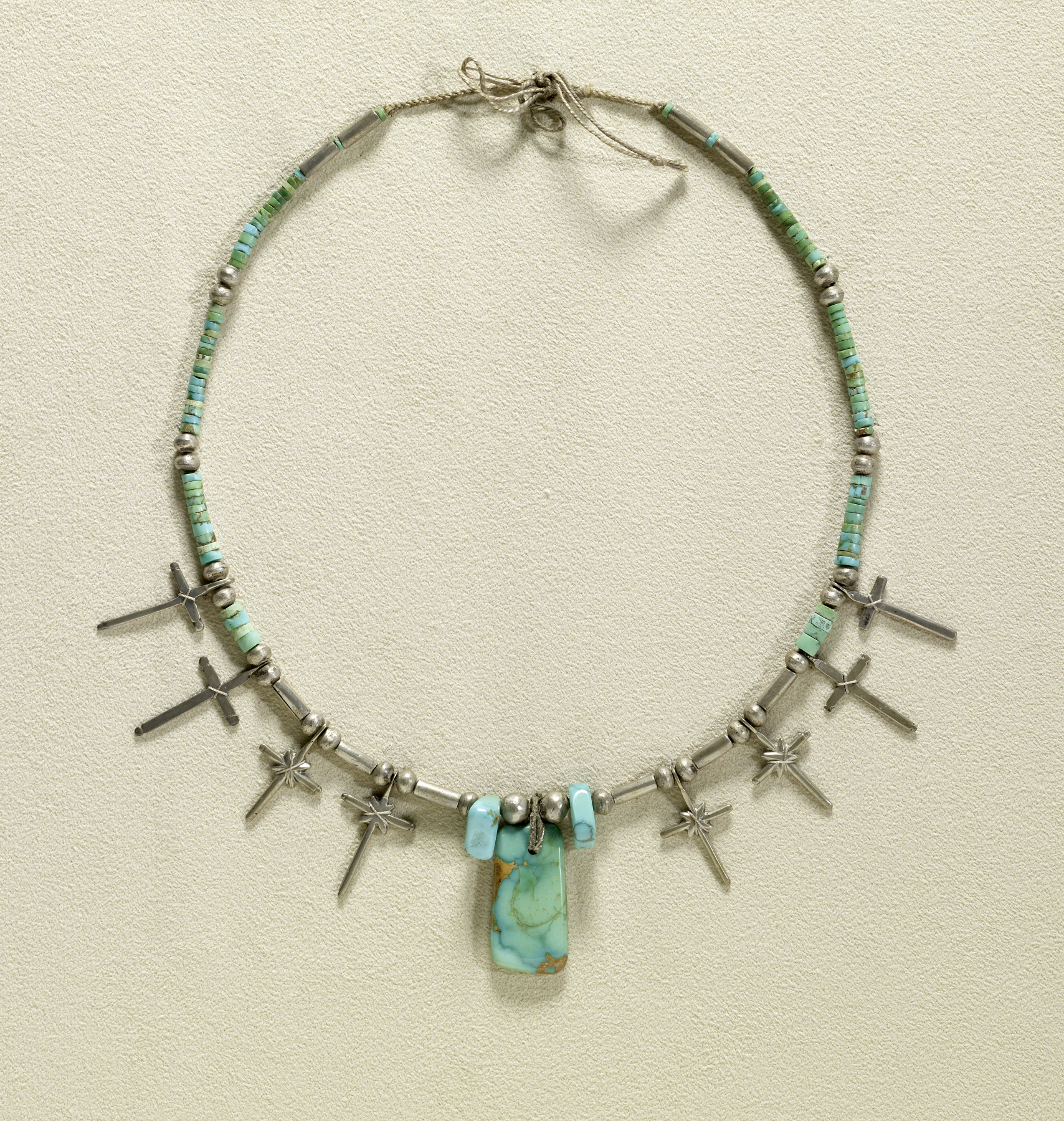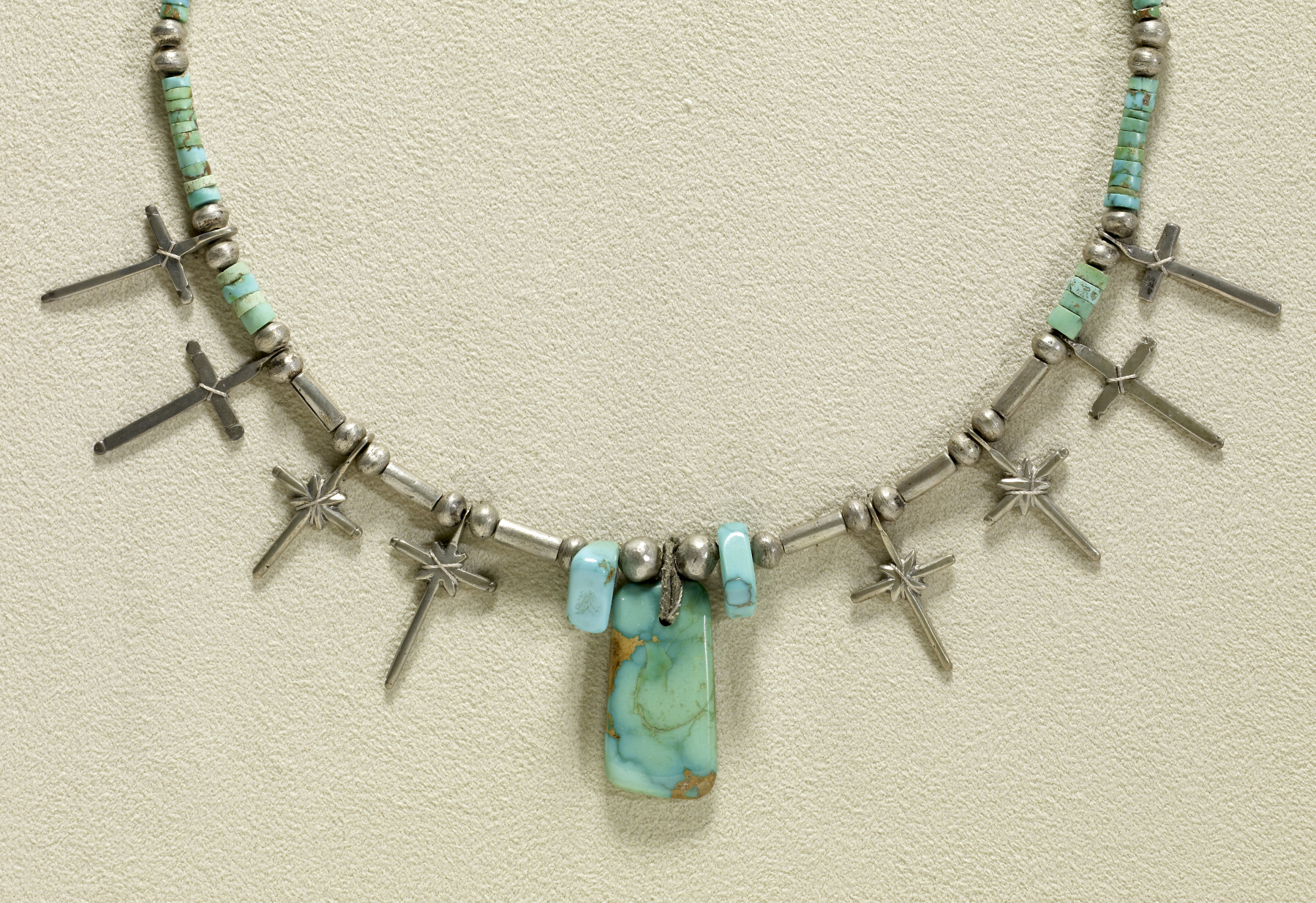Necklace with Turquoise
With the completion of the Santa Fe Railroad at the turn of the 20th century, the American Southwest became a tourist destination. Fred Harvey, a British businessman, recognized the potential of this new market and took the opportunity to open a series of hotels, restaurants, and dining cards along the route. Tourism led to a rising interest in Native American jewelry. This necklace, probably made by Pueblo peoples, is typical of the kind of jewelry sold by the Fred Harvey company. It features multiple small crosses flanking a central pendant of turquoise. This illustrates the cultural complexity of the region -- Christianity was imposed on Native peoples of the area by Spanish missionaries beginning in the sixteenth century, but Indigenous people adapted many Catholic practices to their own beliefs as well.
Provenance
Provenance (from the French provenir, 'to come from/forth') is the chronology of the ownership, custody, or location of a historical object. Learn more about provenance at the Walters.
[Arizona]; Henry Walters, Baltimore, 1916 [mode of acquisition unknown]; Walters Art Museum, 1931, by bequest.
Exhibitions
| 2010 | Bedazzled: 5,000 Years of Jewelry. El Paso Museum of Art, El Paso. |
| 2006-2009 | Bedazzled: 5,000 Years of Jewelry from the Walters Art Museum. Frist Center for the Visual Arts, Nashville; The John and Mable Ringling Museum of Art, Sarasota; The Walters Art Museum, Baltimore. |
Conservation
| Date | Description | Narrative |
|---|---|---|
| 6/8/1979 | Examination | examined for condition |
Geographies
USA (Place of Origin)
Measurements
10 1/16 in. (25.5 cm)
Credit Line
Acquired by Henry Walters, 1916
Location in Museum
Not on view
Accession Number
In libraries, galleries, museums, and archives, an accession number is a unique identifier assigned to each object in the collection.
In libraries, galleries, museums, and archives, an accession number is a unique identifier assigned to each object in the collection.
57.992




